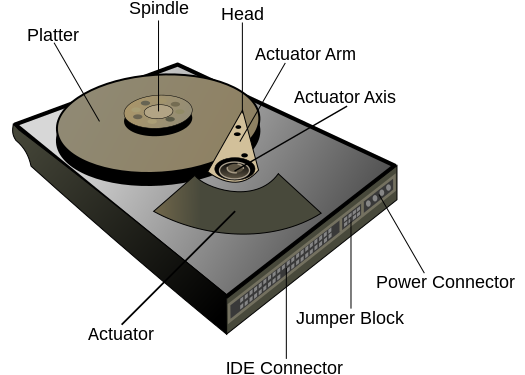Learning Resources
Hard Disk Drive Systems
A hard disk drive (HDD; also hard drive, hard disk, or disk drive) is a non-volatile, random-access, magnetic data storage device. Introduced by IBM in 1956, HDDs have been the dominant secondary storage device in general purpose computers since the early 1960s. They have maintained this position against competing products, including today's solid-state drives, through technological advances in recording capacity and continued improvements in cost per unit of storage and reliability.
An HDD consists of one or more rigid ("hard") rapidly rotating discs (platters) coated with magnetic material. Magnetic heads arranged on a moving actuator arm read and write data to the surfaces. The read-write heads are supported on a thin layer of air inside the enclosed disk unit with only tiny gaps between the heads and the disk surface.
HDD capacity is specified in multiples of 1000 - a 1-terabyte (TB) drive has a capacity of 1,024 gigabytes (GB ≈ 1 billion bytes). However, due to system usage and reporting not all of the specified storage is ever available for user storage.
The primary performance measurements of an HDD are the time to move the heads to a file (average access time) plus the time it takes for the file to move under its head (average latency, a function of the physical rotational speed in revolutions per minute) and the speed at which the file is transmitted (data rate). The original hard drive was the size of two refrigerators, but modern HDDs typically are in a 3.5-inch form factor in desktop computers and servers and 2.5-inch form factor in laptops. HDDs are connected to systems by standard interface cables such as SATA (Serial ATA), USB or SAS (Serial Attached SCSI) cables.
An image is shown -


